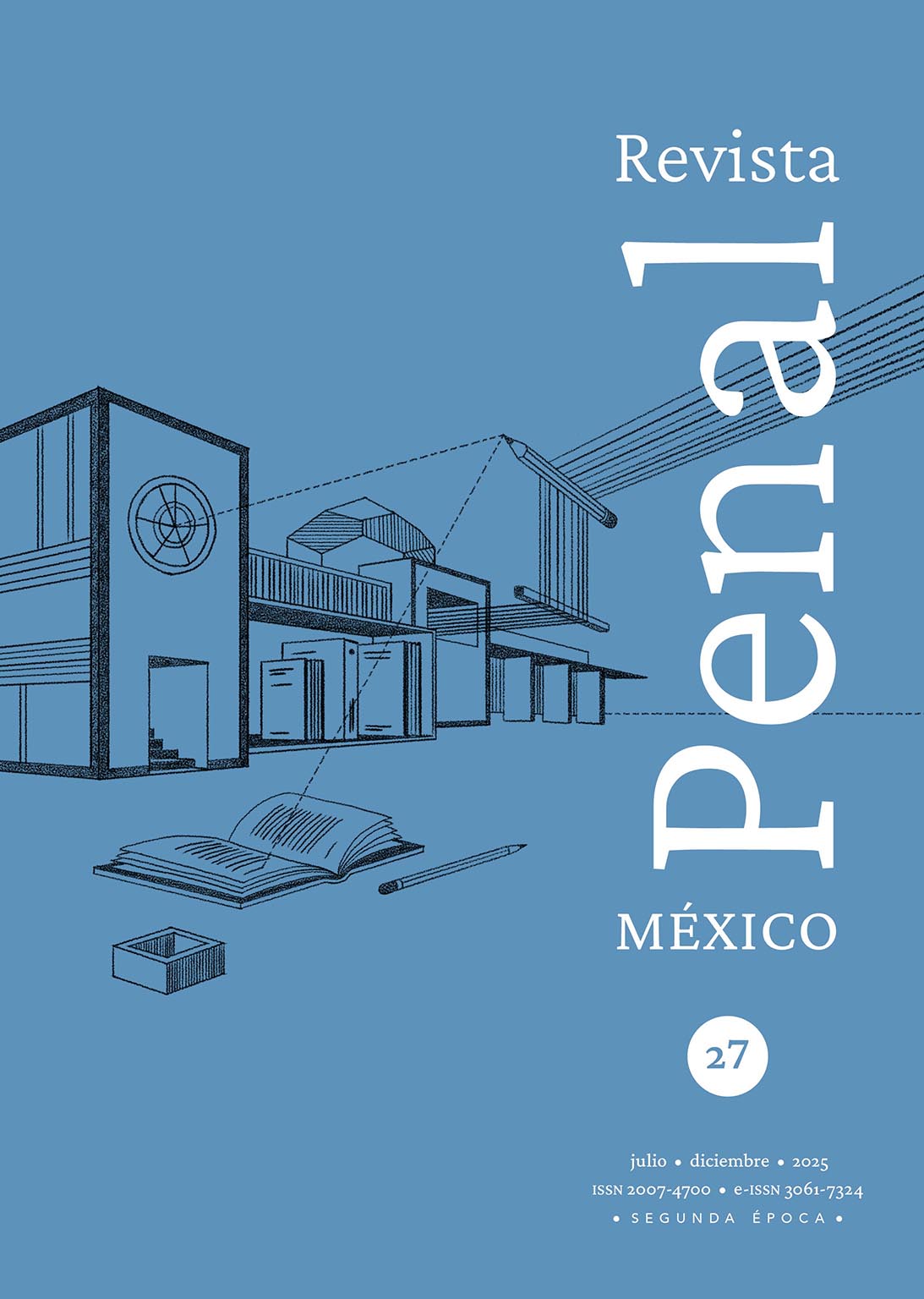Analysis of Human Trafficking in Mexico: Incidence and State Prosecution Capacity
Main Article Content
Abstract
This study examines the incidence of the crime of human trafficking in Mexico and the capacity of state prosecutors to pursue it during the period from 2017 to 2024. A steady increase in the number of investigations opened is observed up to 2022, followed by a decline in the subsequent years. Regarding the exercise of criminal prosecution, limitations are evident in various federal entities. Mexico City stands out with an effectiveness rate of 61 %, while Baja California and Zacatecas show significant deficiencies. The analysis reveals that there is no direct relationship between the incidence of the crime and the prosecution initiated by the attorney general’s offices, highlighting the need for further research.
Downloads
Article Details

This work is licensed under a Creative Commons Attribution-NonCommercial-ShareAlike 4.0 International License.
Deprecated: json_decode(): Passing null to parameter #1 ($json) of type string is deprecated in /var/www/html/plugins/generic/citations/CitationsPlugin.inc.php on line 49
References
Castañón, Araly, “Feminicidios en Juárez: 16 víctimas del «El Navajo» aún no tienen justicia” [en línea], Ciper, 4 de agosto de 2015. https://www.ciperchile.cl/2015/08/04/femicidios-en-juarez-16-victimas-del-caso-el-navajo-aun-no-tienen-justicia/
CNPP: Código Nacional de Procedimientos Penales, publicado en el Diario Oficial de la Federación el 5 de marzo de 2014, artículo 258. Última reforma publicada el 16 de diciembre de 2024.
CNDH: Comisión Nacional de Derechos Humanos, Diagnóstico sobre la situación de la trata de personas en México 2021. Procuración e impartición de justicia [en línea], 2021. https://www.cndh.org.mx/sites/default/files/documentos/2021-12/DIAGNOSTICO_TDP_2021.pdf
Estrada, Jesús, “Fiscalía de Chihuahua investiga trata de menores en albergue” [en línea], La Jornada, 12 de noviembre de 2024. https://www.jornada.com.mx/noticia/2024/11/12/estados/fiscalia-de-chihuahua-investiga-trata-de-menores-de-albergue-1808
US Mission to Mexico, Reporte sobre trata de personas 2023, Embajada de Estados Unidos en México, 2023. https://mx.usembassy.gov/es/reporte-sobre-trata-de-personas-2023/
Valdés, Ivonne, “Las autoridades hallan a 17 mujeres consideradas posibles víctimas de trata de personas en Quintana Roo” [en línea], CNN México, 20 de mayo de 2024. https://cnnespanol.cnn.com/2024/05/20/17-mujeres-victimas-trata-personas-quintana-roo-orix
Valle, Landi, “Fresnillo, epicentro de la trata” [en línea], NTR Zacatecas, 26 de agosto de 2024. https://ntrzacatecas.com/2024/08/fresnillo-epicentro-de-la-trata/

